|
What is your pace at work, and is it working for you?
When you reflect on how you move through your day, at work, at what pace are you operating at? Do you move at the slow and steady pace, moving through items to be done, one step at a time in a highly organised fashion and with a level of stability that ensures, in your own time, you get the job done, while below the surface you feel under immense pressure because other people want you to move faster, against your natural pace? Perhaps you have a tendency to race through your day, pumped with adrenalin that gives you the rush you love, a power of influence and infectious energy that lifts everyone you meet, that is, except you, when you crash at the end of the day, not able to enjoy your home and family life? You may operate within a chaotic whirlwind of reactivity to everything coming your way, constantly feeling the urgency of just about everything, leading you to rush to get things done, in your mind, to ease the urgency and calm the adrenalin spikes, but you never actually get to inner calm? You may enjoy jumping from one idea to the next, thriving on ideas and possibilities, while deadlines and details pass you by, forming a sense of inner dis-ease and challenging your self-esteem. Perhaps you are a visionary; you have your eye on a meaningful distant goal and you pace yourself for the long-game, setting strategic objectives and taking pro-active steps to meet each one, upholding firm boundaries to anything that may steer you from the dream? You have no problem saying ‘no’ to people and tasks, because you are firmly saying ‘yes’ to what matters most, but along the way, relationships fail to flourish or the tasks of daily life pile high that may well frustrate you or others! Perhaps you function with a yogic balance; you arise to the sound of windchimes, take a green-tea and a meditative moment before you begin your day; you read your daily goals, you grace through your morning tasks and take a mindful break before engaging in interactive meetings with mindful notetaking. You pause for lunch, noticing the taste sensations in each mouthful, followed by a gentle stroll as you prepare to deeply focus on an important task, placing a boundary around all distractions. You bring your work day to a close with reflective time, setting and adjusting the agenda for the days and weeks ahead so that you can maintain your balance and enjoy your home and family life. Everyone is different and I am not suggesting a right or wrong way of being, there is a pace suited to varied roles, rather I am inviting you into a moment of reflection for the purpose of identifying whether how you are being is working for you, and, if it aligns with your deeper truth about who you are, what you want and how you want to experience your life? Why we are the way we are? In a nutshell, the combined forces of innate beingness and conditioning: some are born to walk, others to run, while there are those who are destined to sing, dance or fly through their days. As the years of our lives unfold, the ways of world tend to shape our emerging and becoming, instilling innate driving forces that cause us to act and react as we do, due to a foundation of deep seated negative beliefs that instruct us to ‘do better’, ‘be perfect’, ‘move faster’, ‘be good enough’, or ‘be right’, driving forces that fire a need for achievement, advancement, acceptance, and pride while internally fuelling a sense of unrest, anxiety and stress, or, for the lucky ones, positive influencing forces steer the currents, inviting a rhythm of calm confidence, steadiness, restful focus, peaceful practice, liberated expression, happiness, joy, balance and harmony that simply helps make life better. How do you want to be? While answering this question may seem obvious to you, there is a chance that your answer is a conditioned answer about how you think you want to be, and not the truth of your deep inner self? I recall when a part of me would answer in the name of peace and harmony, only to recognise a deeper truth; that actually I believed that peace would be quite boring. Dive a little deeper, and the truth is that I did not have any idea of what a state of inner peace and harmony felt like, so it was an abstract concept at best; I thought I wanted something I knew nothing about! Move forward a decade, and from a place of knowing true peace, I can truthfully state that I choose to operate in peace and harmony, because I know this feeling and this power, there is not sense of boredom here, indeed in peace and harmony, there is a clear sense of meaningful purpose aligned with the values of my heart and an inner power that unleashes abundant forces of creation, focus and drive. Now I know that I do not need or indeed want surges of adrenalin to energise my day, because they steal my peace, limit my focus, and disconnect me from holding the focus on important long-term beautiful goals. My peace is my power for generating success where it matters and harmony is grace I aspire to. How do you make the change? In a nutshell, with love and faith. When you love yourself, you believe in yourself, your possibility and potential, you own your truth, uphold your value, command respect and choose faith over fear, because it’s the kind choice to self, and it is the choice that fundamentally drives success where you most want it. Learning to grow love and faith arms you with the power to hold up a psychic shield to pressure, to make caring choices to ease your pace, to choose joy over adrenalin highs, and the realisation of deep fulfilment over quick wins, to grow from reactive living and into mindful presence, breathing, owning your strengths, and possessing the courage to move to new pastures if they are not valued where you are, and to moving into a deeper sense of presence and connection that helps you balance your visionary dreams with the tasks of daily life, because you faith, truly, that the dream is unfolding, and patience is truly all that is required to ease the balance of your life and help bring about a new harmony. Where are you at, where do you want to be, what belief is holding you back and what belief and combined action could help you break free and move into a pace of being that is simply better for you? Discover more - book a 15 minute discovery call for support in changing your pace to start living your life in a way that makes you feel better [email protected] www.antoniabehan.com .
0 Comments
It was an interaction with an ex-boyfriend that highlighted the ‘power’ theme for me, of course, as an after-event, where hindsight has the remarkably annoying capacity of providing useful information late! I recalled how I felt seeing him; the stirring of feelings felt perfectly natural, it had after all been a positive relationship of many years. We had asked after each other’s family; a sincere interest and care, we mentioned our working lives, briefly, while the very dominant theme of my today life captured the main conversation; two beautiful faces beaming from the pushchair. And there was this feeling, I became aware of it in the moment, but I was in it, rather than in the space from where I could view the ‘happening’; it was a sense in my body of being ‘off-balance’, a change in my state, moving out of my presence, and out of alignment within something I could not quite name, and into a place where my ability to choose to respond to life is ‘photo-bombed’ by the subconscious coming out to play an old way of being, formed on earlier mental programming about ‘how to be’ in such a scenario. ‘How to be’ in a relationship dynamic such as this meant, to my past self, being ‘less than the other’ and we know the core belief underlying that one: ‘not good enough’. I was on the one hand ‘playing’ what I thought was my present authentic self, because here I was now, a mother, home owner, business owner, and with several other success stories to my name, engaging in polite conversation, feeling confident and exhausted, because what single-mother to two boys under three isn’t living in a perpetual state of ‘happily knackered’! But the truth is, I was not showing up as the person I have become, not the essence of ‘who I am’, rather I was showing up as my ‘titles’ in relation to other people: ‘Mother of my children’, ‘Ex-girlfriend to the man before me’, and on a basis of what I had: ‘Business owner’ and ‘Home owner’. These are reflections of positions within relationships and material possessions, but they tell nothing of ‘who I am’. Let’s face it, do you truly know anyone on the basis of their role for others or what they own? Who I was being in this interaction, was someone out of alignment with something I could not name, and the reason I could not name ‘it’ was because I cannot give a name to something I am not in acquaintance with, at least, not then in that moment. Now I see what was happening; I was presenting myself out of alignment with my authentic self and the feeling I had of being out of alignment was a result of the power imbalance: I felt myself ‘fall down’ into ‘less than’ as we played out our conversation, while at the same time trying to distract myself from this ‘less than feeling’, by giving the focus to my accomplishments. My authentic self is there, I sense her, I know her in those brief moments when I do the ‘work’ and remind myself of my core essential truth about who I am - a creative being, a truth-seeker, a writer, a person dedicated to inspiring and empowering others to heal and grow, a spiritual being on a quest for realising greater love in our world, and someone that gains great joy from appreciation of natural beauty in life, an artist, a co-creator, a manifester, a free spirit, and, a dancer! I know who I am, but sometimes, ‘How I am’ falls out of alignment with this authentic truth about ‘who I am’, and, it is at the core of why that relationship failed; you cannot be in a loving relationship with someone if you are not showing up as your authentic self, because such a relationship cannot bring true happiness and it cannot grow in true love. Life was once again reminding me to connect with my authentic self and bring her to the conversation, rather than standing in the shadows, holding a knowing that is silenced by the ramblings of subconscious beliefs that steal the show because they hold the power, and only because they are experienced in stealing the show with their loud voices and strong presence, and they shall continue to play out their lead roles on the stage of my life, until my authentic self decides to speak up, step into the light and own the stage! What I am writing about is living in full integrity with our authentic selves. It is one thing to find the self and have an idea of self, but another to truly know the self in a fully integrated way, so as to live your authentic self; owning your truth about who you are at your purest essence and being this, being present with this, in your world, every day. When I imagine holding my power as my truest being, next time the interaction would play out differently: I may once again engage in polite conversation, I may ask with sincere care about family members and working life, but I will not falter from my authentic self, I will stand in love, proud of myself at my very core. No negative self-talk required; the voice of ‘less than’ silenced by my strong and present and by now well-versed voice of love. As a result, I will be present as an ‘equal’ to the other, no more, no less, and ‘good enough’ by choice. We cannot stop our triggers occurring, what we can learn to do is to stop them pulling us ‘off centre’ and out of alignment with our authentic presence, and the way we can learn to do this is through the practice of mindful presence, so that we become better able to own our integrity, our truth, our power and our presence, and give strength to the internal voice of love. To better live-in alignment with my authentic self, so that she is not only a known presence in my life, but a fully embodied and lived presence, what I am learning helps this process is: Mindful Intention: ‘I intend to allow my authentic presence to stand boldly in love, and shine’ Behaviour change – I know I need to slow down and do less so that I can be more and achieve more of what matters to me in my life: to be a calmer mother and a successful writer. This means letting go of attachments to ‘doing things for my boys’ and instead knowing that when we slow down together and we simply play at home, in the garden, in the trees, and with less organised interaction and activity, we are not only just as happy, but usually happier because we are not rushing to get somewhere on time! It means letting go of a project I run to build my community, as much as I love it, to give focus to a greater love, and it means letting a ton of stuff go, because really, it can wait until tomorrow! It means letting go of habits that take me away from my priorities (tidying the toys can wait, and turning up on time for friends can be let go, for now, because taking ten more minutes brings greater peace to all, peace is a greater value to me, and true friends accept this). Breathe – this is about making a conscious choice to keep noticing and deepening the breath until deeper calmer breathing becomes the natural way. Sleep – the key to general well-being, and a challenge in my world. This need and lack can only be met with the loving choice of acceptance, and through acceptance, understanding that my authentic self is not always going to be someone I like, for a while, because she is tired and easily emotional. But this will pass (some say when the boys are five, others once they are thirty, and some say never!) The truth is, we can only be as we are in acceptance, or in denial and frustration. This is me today ‘Happy knackered’. Creating mantras: ‘I enjoy the peaceful presence I choose to cultivate’. ‘I let go of what I can do for fun, for now, to give greater energy to a powerful creative path that resonates deeply with my heart and soul, giving me a profound sense of meaningful purpose and deep life fulfilment’ Engaging in power and present building practices In my ideal world - Every morning, no matter what, do my breathing and yoga workouts, even if there is a baby on my head and another jumping on my arm, because one day they won’t, one day they might play and another they might copy, so choose faith over present frustration. In my reality – it just doesn’t work like this, so let it go, and practice presence when walking with them in the pram, or in 5-minute gaps between work and family life. Yoga and toned abs can wait another year. Doing what my heart and soul loves – playing with my children, writing, dancing, painting, cooking and actively inspiring and empowering people to love and believe in themselves is what I would love to do. I already do this. My learning from this is I generally practice living my authentic truth in what I do each day, but I am not holding my power and bringing my authentic self to the moment because I allow old triggers, random thoughts, and ‘have to do habits’ to steal my truth, and this happens, in a nutshell, because I am not breathing calmly. Through calm breathing, I have the mind mastery skills to let go of the unnecessary and old patterns of thinking and being, and allow my authentic self to be present, so that I no longer fall into resonance with the echoes of my past, but stand boldly, bravely and firmly in my authentic presence’; ‘Loving and happily knackered’. Your reflection space:
Copyright Antonia Behan 2024 This weekend I had the pleasure of co-creating a beautiful community connecting event in my local village, a ‘Madhatters tea party’ at the ‘Greengables’ child and family centre in Sotogrande, with live music, arts and crafts activities for all the family, puppet shows, treasure hunts, stories and an artisan and eco-market, inviting many members of our local community to connect and collaborate in bringing together a fun-filled day of entertainment, joy and creativity. The sun-bathed garden came to life in a peaceful collective with children laughing in the sandpit, bouncing on the castles, playing croquet on the lawn, and enjoying a healthy array of treats and delights from the colourful stalls, while parents lounged under parasols, enjoyed their picnics, and together, all delighted in the beautiful and calming music from the Atrium music group, with their piano and violin duet. In the woodland garden, the artisan and eco-market presented participants with an opportunity to sample local organic honey, freshly made paellas, to meet local authors and artists, and purchase stunning silk dresses, local hand-made ceramics and beauty products, and to meet the wonderful volunteers giving their time to support our local animal charity (SOCCs). The mad hat making competition was a highlight of the afternoon, with families playing together to create their colourful creations, driven, in some cases by a burning motivation to win the grand prize; a hamper full of delights from the artisan and eco-market, graciously donated or gifted through our sponsors (Helicopteros Sanitarios, Collect Corner, Atrium and Antonia Behan). The feedback has been very encouraging, with a strong appreciation for the energy and space created by all who made it happen; a reflection of the Sotogrande family way of life that so many wish to celebrate and enjoy more often! As with all events, there are areas to improve and I recognise improvements in areas of sound quality and learning how to better incorporate a market space to improve the flow of the day. However, the key area of reflection from the day that I would really like to address is a topic that I believe will be of interest to many, and a topic I am grateful for having being brought to my attention: Competition in children. I think many in our community know of my passion for living and leading from love; the essence of my professional work with adults and adolescents, businesses and schools, developed through two decades of learning and professional training, and practice in the areas of developmental psychology and coaching. I love to explore and facilitate the integration of heart-centres values into the way we live, learn and work together, while empowering individuals to love, like and believe in themselves, because from this essence and foundation, anything is possible, and that possibility holds a greater chance of being something truly beautiful. At this event I failed. I’m okay with failure, finally, after most of my life not being okay with it; today, I embrace failure as a learning and growth opportunity, and this is what I am learning… Lesson #1: Slow down Trying to do too many passion-filled things, and with all good intention, as a single-mother by choice, raising two beautiful boys (Louie age 3 and Georgio, 18 months), while operating in a state of semi-consciousness derived from about four years of sleep deprivation (If you are a parent, you know!), and while realising priorities need to be better defined, not fully implementing them, yet! As a consequence, I missed a really important element in the design of the day, and I did this because I was going ‘too fast’: lesson #1: Slow down Lesson #2: Play together The mad hatter’s competition was created to bring families together, to be together, to create and have fun together. My focus on connecting people in a positive way overshadowed the ‘how question’: ‘How am I approaching the nature of competition as a psychologist facilitating heart-centred living?’ In her book, ‘Playing to Win: Raising Children in a Competitive Culture’, psychologist Hillary Friedman describes the findings of her doctoral dissertation in sociology at Princeton University, which was focused on the investment in competitive activities for young children. The learning outcome, from a participant study of 95 parents, was that this investment was made because parents believe competition in childhood helps to prepare children from the competitive nature of the adult world, and on the surface I would nod in agreement, because it seems logical; early exposure to competition would surely bring children opportunity to learn how to celebrate success modestly, embrace disappointment, and manage other competition generated feelings and emotions in a healthy way, notably through reflective discussion with parents and caregivers. Last night, when I reflected on the nature of the ‘mad hatters competition’: families making a beautiful mad hat, where all of the ‘mad hats’ were truly worthy of equal praise and pride, I thought about how the children may have experienced this event and competitive element? I can only truly know by asking them, so I am interested to head about this feedback in the coming days. I think it would be fair to offer that the nature of competition is not fun, and especially not for the one who is consistently losing, what it is, is pressure, adrenalin, and a focus away from connection with self and pure creative expression and into the head with eyes looking outwards onto the prize. Then I decided to reflect on the impact of competition in my world: In the past, there were times when a feeling of competition would have led me to take a step back, let the other person rise or win, because it felt like too much energy was needed to compete, it felt uncomfortable and that the other person was ‘too loud’, and the reason I felt this was because I did not enjoy high adrenalin, pressure, or the feeling of having to 'fight'! Competition drained and deflated me. Later on, there were times when competition gave me energy, prompting me to ‘do better’, work ‘harder’, and give more energy to my pursuits, notably around secondary education examinations. However, the underlying feeling was always stressful, somewhat aggressive, and with an element of urgency that didn’t make me feel good, worked against embedding learning, and often left me drained after that momentary ‘high’. I would have been wiser to move with my ‘inner tortoise’ instead of trying to be the ‘hare’, trying to get things done quickly, to get them over with, to get past the pressure feeling, instead of enjoying my learning experience. When I took a further step back and I looked at the chapters of my life and the success stories I had to my name, I realised that my greatest successes had nothing to do with competition:
Competition has offered me no value, indeed, it has only served to create stress and anxiety, and in the strongest way from the teachers and the ‘very good UK private education system' that I was privileged to be given, where I was constantly bombarded with tests and exams from teachers who insisted I must get ‘A’s, and where a ‘C’ would have been classed a failure, which quickly translated to: ‘I will be a failure if I don’t get A’ or B’ in subjects that I certainly memorised for exams, but with content fast forgotten. Even the content of my university degrees was clouded by the pressure to get the grades and work fast to memorise facts, while my joy for the subject and the knowledge I have embedded, has been gained from the books I choose to read, the research papers I select when life brings the theme to me, the therapists, healers and psychologists that have helped me over the years, the internships and the opportunities I have been given to support adults and children in educational and clinical settings; my natural daily life, where freedom to learn held precedence over pressure to learn. Yes, you could argue that my degrees opened the doors of opportunity, and now I would say to you, yes, my degrees are of value, of great value, because they present me with one of the paths to do the work I love; they are many roads to living your essence. But, I would argue now with hindsight, that there was no need for the competitive element, indeed I will stand for change and encourage a better way of learning for life and living our lives; freedom to learn and grow, over pressure. I see no value in competition. I see value in inspiration; let’s inspire our children to find their calling, through walking our own true paths, guided by the core values and deep passions of our own hearts and minds, and trust that our children, whatever they endure or encounter, will find their way, and generate the success in life that truly matters to them personally. When they are met with competitive energies, let them not respond with the voice of internal criticism, ego-centric celebration, anger or disappointment, rather, let them know the value of their experience, by giving them the freedom to connect with their joy for learning and creativity without pressure or negative judgement, so that whatever the outcome, they have had a liberating and valued life experience. What we can do to support their path in life, and to embrace the challenges with resilience, is to empower our children to love, like and believe in themselves, to connect with themselves, their creative expression and their joy, gifting them with the opportunity to discover who they are, to grow their core power and discover their joy for life, and this, in my experience, is a far greater remedy for true life success, and one of the most powerful ways for children to find themselves, believe in themselves, know themselves, and to connect with their joy, creativity and passion, is to let them play. Copyright Antonia Behan 2024 www.antoniabehan.com I recently broke through a barrier. At first, the wall seemed insurmountable, and a great amount of procrastination kept the task safely at bay.
My psychological obstacles were clear to me; I knew what I was up against, I just didn't want to invite the challenge of braving vulnerability. So what gave me the push? After the great amount of procrastination, in which I led myself to a crossroads in my life that, in a nutshell, led me to consider opening a school to give my boys a new way of learning; more love, less pressure and greater relevance, while conveniently keeping vulnerability at bay, I re-centred myself, and I decided not to surrender a life long vision, in the name of fear. The fact is, I have achieved every stepping stone intended, the next one is just very big! It is clear what I truly want for my boys and I have every intention of creating it, but I am not giving up my career, instead, I am stepping up! The signs were all around, life was speaking to me in the form of 'road sign posts' heralding the message: 'Live differently' and 'Take a different route'. The thing is, as with any divination system (I know, I used to read the cards), it is up to the beholder to choose how to interpret the signs; we can do it by aligning them with our ideals, our curiosities, our values, our fears, our passions, our big wild dreams, or our impossible perfections, or, we can calmly embrace the present, review our core heart values, embrace reality and all the feelings and emotions that come with it, and decide to take on the obstacles that are standing before our true wants. When I broke down the obstacles, it led me to a simple truth; fear of vulnerability. So here I am, stepping forward and out of my comfort armour of ‘corporate coaching psychologist, where it is ‘safe ’to listen, ‘safe’ to be present without exposure, ’safe’ to ask insightful questions, and ‘safe’ to teach about psychological well-being, leadership development and cultural integration, and into a greater authenticity, so that I can take the next step - to facilitate co-creating harmony in our world on a bigger scale, because it feels exciting and allows for my creativity to be unleashed Doing this means getting people on-board with my vision, and this means sharing my story, and this is what felt so scary! I took the first step; I launched my podcast ‘In Harmony’, and I shared an aspect of my story about learning to live in harmony in: ‘The power of love’. What I learned was that it was the fear of stepping out that felt insurmountable. Now, moving in the unknown, present and exposed, actually, it’s not that bad! Everything is still unknown, but I removed the obstacle that was in my power to overcome, and in doing so, I simply acquired more power to be with life! What gave me the push? LOVE – Love for my boys and passion for my meaningful heart-centred career purpose. Love is powerful Here is ‘The Power of Love’ Nurturing a workplace culture of belonging requires immense bravery
Growing a belonging-centred company is a test of strength that invites leaders to remove the armour that sets people apart from each other, and move into a space of authentic presence, because you can only create a sense of belonging in a space where people are their true selves. The armour’s that separate people in the workplace are ‘title’s’, income brackets, net worth, qualification, power of influence, and the psychological defences of the ego. Although we cannot remove the facts, what we can learn to do, is to step out of the ego-base and the aspects of identity built on what a person has achieved, or the version of themselves that they feel confident about projecting, and step into authenticity, which means accepting the self, sincerely. In the absence of self-acceptance, aspects of self are denied, hidden or avoided, masked by a limited version of a person, while feelings and emotions, thoughts and ideas may be supressed, and the voices of critical judgment shout out above the voices of empathy, compassion and kindness. In the absence of acceptance, we are operating with internal conflict, bringing about a more reactive way of being and often with a higher emotional charge, while living disconnected from each other. Moving towards a more connected way of being with ourselves and each other arises from acceptance of self and situation, which allows for the fostering peaceful relations in a space of openness, authenticity and empathy, and it is here where a true sense of belonging is birthed. This is because when we resolve our internal conflicts and embrace who we are, and how we are, and what we are, and where we are, and what we have, in acceptance, we diffuse the charge that triggers our defence systems to go up, where the voices of negativity, critical judgment, comparison and frustration play out, and instead, our state of being in peaceful acceptance with self, allows for an openness and authentic state of being to connect heart-to-heart with others. When authentic human connection is chosen, through the process of acceptance of self, it then becomes possible to state that: ‘I accept myself as I am’, which makes it easier and more genuine to state that ‘I accept you as you are’, which leads to: ‘I include you as you are’ and ‘I feel included’. In a space where acceptance and inclusion are created, a new sense of curiosity emerges where people begin to show that: ‘I am interested in who you are’, and ‘I want to get to know you’ and this leads to ‘I care about you, ‘I want to support your growth and development’ and ‘I value, respect and believe in you’. Our interest and curiosity for others, when cultivated in a space of authenticity and acceptance, very naturally gives birth to compassion and kindness, because these are our natural human qualities that cannot help but shine when a person chooses to open themselves. It is here, in this genuinely positive and love-centred space that a sense of true belonging is felt. Getting to self-acceptance means inviting the questions: ‘Who am I?’ ‘How am I?’ ‘How do I feel’, ‘What is my story?’ ‘How do I feel about my story?’, ‘Where am I in conflict?’ ‘Where am I in peace?’. ‘What am I hiding; where is there a feeling of shame?’ and ‘Where am I authentic acceptance?’ Once the true self can be seen, then next step is about processing any unresolved emotions that disturb the peace of the soul, and fostering a state of mind that supports self-acceptance, which is fundamentally about making the choice to love the self. With growing self-esteem and emotional healing in process, the self becomes a stronger and braver self, better able to face fear, doubt and uncertainty, and able to develop and implement the mind mastery skills that help foster new and healthier habits and behaviours that support the growth of positive living, and herald a return to the authentic self; to truth and to love. A love-centred self, accepts the self, and knows that they belong or that they don’t, and if they do not belong, it is not founded on insecurity or lack of self-love rather it is based on the fact that there are simply different value systems at play, and that they indeed belong somewhere else, and that is perfectly acceptable. Growing a belonging-centred culture is more than making people feel that they belong, or incentivising them into your values system. Growing a belonging-centred culture is about leadership from people with healthy self-esteem, authentic presence, and a clear vision and values set inviting people who align with their vision and values, to authentically connect, and grow together. If the self-esteem and level of acceptance of an individual is low, this can hinder the felt-sense of belonging, but in a space where leaders embrace people who align with their vision and values in acceptance, while fostering inclusion practices, the possibility for developing a sense of belonging grows exponentially. Copyright Antonia Behan 2024 'Mama milk, mama milk, mama milk' cries one sweetheart, while the other cries because he wants to be cuddled to sleep. My nerves are frazzled on 4 hours sleep, and the noise and needs of two babas at the same time becomes overwhelming, until I say to myself 'One thing at a time, just one thing at a time'.
The reality is I cannot give them both what they need at the same time, as much as I would love to, and in the back of my mind, the voice of 'I can't' triggers feelings that disturb my peace and leave me feeling that I can't cope. The deeper truth is that these are just words that have temporarily claimed power over me, just words. The deeper truth is that I can cope, and I can care for both of my babies pretty well as long as I put my focus on 'One things at a time', 'I can do one thing at a time', I remind myself, because I can, but what I cannot do is be superwoman. 'One thing at a time' I echo, and with this mantra my peace is restored. What this looks like in the moment is first of all accepting that one of them is going to keep crying. I give one his 'mama milk' and those tears end, and the I offer the other one some too, for momentary distraction, until I can fully hold him in both arms and cuddle him to sleep. When one wants me to fix his train set, moments after he has mindfully taken the tracks apart, and the other is stuck on a half-rollover on his baby gym, the feeling of being torn between two wants triggers feelings that disturb my peace. 'One thing at a time' looks like, accepting the sounds of their cries, picking up the baby in my arms and walking over to fix the train tracks with the other hand. I cannot attend to both their needs at the same time, and its okay; they are okay. The overwhelm of both children calling to me with their needs, and when this is further intensified by cries or shouts, is overwhelming when my reaction, my natural reaction, is to meet both their needs, or our own, in that very same moment. Saying 'I can do one thing at a time' overrides the automatic reaction that has me pulled in two or three directions, with rising anxiety, to calmly attend to one need or want at a time, and let everything else go; this is the path to peace. There is something on the horizon, it’s beginning to come into view; a bright light emerging and the dawn of a new day in a new year full of hope and possibility. I wonder how you feel about emerging radiantly with the first sunrise of 2024 as your full authentic self, choosing courage, strength and bravery for the first or thousandth time, so that you can live liberated, free to create and craft yourself, your home, your community and your world as your true heart desires? Simple.! It is really; it’s usually 'just' a mindset away from being real. I would invite you on the journey to grow the winning mind to co-create your heart-felt reality, but I’d rather offer you something even more beautiful and soul strengthening, especially for those of you who already understand the mind mastery tools. I would like to invite you to make one simple choice, a dedication to you, that will by the very nature of its presence, touch the hearts and minds of others, and most certainly bring the emergence of new peace, freedom, happiness and fulfilment. I invite you to look in the mirror and say ‘I love you’ and mean it, sincerely, from the centre of your heart. How does this make you feel? Is it stirring your energy, perhaps some curiosity, or an element of wonderment? Is there a sense of a flicker of an inner light that might feel like discomfort but could equally be named excitement? Can you put your mind on it, give it your focus, let it emerge, let your inner light shine? It might feel scary, it might feel new, it might feel like something you have not allowed for a long time, or ever? An unknown light emerging, the light of you, your core truth, your soul. Can you allow your own emergence and becoming, the truth of you to be present in the world? I wonder how it, your light, your authentic truth wants to shine in the world? When you choose love, you connect with the very core of your being, you feel connected with the light inside of you, and this connection, this knowing, this feeling, it gives you great strength. It is the energy and vibrancy that empowers you to apply effectively the mind mastery tools that shape the world of peace, freedom, happiness, fulfilment, joy and harmony. Choose love, and then… …what happens after you choose love is a mystery, a wonderful, beautiful, daunting and exciting mystery. You can try to frame it, box it, control it, but the truth is, the mystery is far too grand; a limitless possibility and potential once you have made the dedication to love. You can craft dreams, beautiful dreams, infused with the light of your love and the passion of your soul and then you can ignite them with clear conscious and determined action, as you place one new footstep and then another onto the Earth and walk with her into her new dawn, allowing the great mystery to unfold with you. You can move quietly, gracefully, passionately, gently, beautifully, radiantly, joyfully, excitedly, happily, and you can walk, run, dance or sing, its’s your life, your creation, your story, your truth, your emergence and your becoming, and it’s your choice. Choose Love. Look in the mirror and say ‘I love you’ and mean it, sincerely, from the centre of your heart. And then celebrate the dawn of the 2024, the year of love. The year you choose to own the power of your love for the benefit of you and your world. And if you feel like a little encouragement, pick a link below and feel the energy of the music move through you as you walk towards the nearest mirror and say ’I love you’. ‘Ain’t no mountain high enough’ (Marvin Gay and Tammi Tarrell) ‘Stronger’ (Kelly Clarkson) ‘Eye of the tiger’ (Survivor) ‘Don’t’ stop believing’ (Journey) It’s my life’ (Bon Jovi) ‘Beautiful’ (Christina Aguilera) ‘Imagine all the people’ (John Lennon) ‘Beautiful Day’ (U2) ‘What a wonderful world’ (Louie Armstrong) The beauty of the act is that when you look in the mirror and speak these words of love, you speak them to yourself, and to your soul, and they reflect back and beyond you to your entire world. I wish you a very happy Christmas and a new year filled with love Antonia xx 'The difficult thing is that vulnerability is the first thing I look for in you and the last thing I'm willing to show you. In you, it's courage and daring. In me, it's weakness' Brene Brown
The meaning of vulnerability To be vulnerable means to share your innermost feelings or celebrating your successes without fear of rejection or criticism turning a positive human connective experience into a hugely daunting task. In her book, 'Daring Greatly', Brene Brown defines vulnerability as “uncertainty, risk, and emotional exposure.” She goes on to state that vulnerability is at the core of shame, fear, and the struggle for worthiness, and it is the birthplace of joy, creativity and belonging. To truly let go in our creativity, to allow our hearts open to the light of joy, and to authentically connect with ourselves and each other, we can only do so through vulnerability, but so often fear gets in the way of this liberated state of being, encasing us in clouds of shame and thoughts about not being ‘good enough’. To give ourselves permission to be vulnerable, we must learn to embrace our feelings of shame, fear and low self-worth, and choose to dare greatly to love ourselves and so allow ourselves to be present in our true and full expression. Where is vulnerability showing up in your life?
The Power of Vulnerability
Obstacles to vulnerability
What Vulnerability is not Although a popular belief and misconception, vulnerability is not weak. To choose to open up and share how we are thinking and feeling, to ask for our needs and wants comes with exposure, and with exposure, potential for judgement, critics, rejection and abandonment. Vulnerability is not weak, it is a choice of strength. Embrace your Vulnerability
Copyright Antonia Behan 2023 www.antoniabehan.com Do you understand how much power you have to effect change and create what you want for your life?
Own your power: Owning this power to choose your response requires mind mastery and emotional resilience, so that, even in the face of strong adversity, and where you may feel helpless or powerless to effect change, you can begin to claim your power. Your power develops when you make the decision to be brave, have faith, maintain positivity and let go of fear, doubt and worry. It is about choosing the qualities of love above all else. Be realistic about expectations: This is not easy, it is possible. When feeling anxious, nervous, worried, scared, pressured, stressed, overwhelmed, angry, frustrated, powerless, lost, helpless, exhausted and your mind wanders into negative thoughts, harnessing the mental strength to stop this, and to be able to pull yourself back into present, take a few deep breaths and respond to what is happening within you (because it is always about what is within you), in response to your reality, with are, compassion and kindness takes strength. To then decide, with firm discipline, to speak to yourself with kindness, encouragement, words of faith, hope and possibility, is also hard; its hard, because you have to decide that you mean it. This is what strong love looks like. And you do it again and again; respond with love every time you are pulled back into a feeling or emotion that triggers negative thinking. Take action where it matters: Once you manage to succeed with your mind, you are ready to act on your words of encouragement, love, positivity and possibility. Decide what action matters most right now, hold the vision, keep the focus, maintain positive mantras and do not stop until you arrive at your destination, for as long as it keeps being important to you, a top priority, and a true heart value. You have to want it enough and it has to matter enough to brave uncertainty and nurture with love and faith. You can do this, you can do anything you decide you can do. Wisdom says:
"To forgive is to set you free", "You forgive for your own peace" "To choose forgiveness, is an act of love" "When you forgive, you let go of holding on to the anger inside that is hurting you" And yet, forgiveness feels like giving up and allowing the person who hurt you to be set free; to get away with what happened. One thing I know for sure is that you can only really understand forgiveness, when you go through the process yourself, fully. Intention to forgive is the first act of love, but this is not forgiveness Saying "I forgive" is the cognitive process in forgiveness, but this is not forgiveness To truly forgive, is an emotional process. I know in my soul that I had to forgive the doctors involved in monitoring my baby girl. After a healthy pregnancy, and learning that all was well at the 36 week ultra sound scan, at 37 weeks, she suddenly stopped moving. My doctor asked a nurse to conduct foetal monitoring for two minutes where the nurse told me she was fine, and sent me home. Over the next two days, I continued to raise concern about her not moving, after moving many times through the days of our third trimester, and my doctor continued to tell me that the foetal monitor confirmed she was fine, and to stop worrying. I was a new mother, I assumed they knew what they were doing, and that I was just worrying. Three days later, they agreed to monitor her again and this time it was a midwife who carried out foetal monitoring. She told me that it needed to be 20 minutes to gain an accurate insight into what was happening. Following this, an ultra sound was carried out to further assess my baby. The ultra sound confirmed that there was no heart rate; my baby girl had died. When I asked why they had carried out the ultra sound on this fourth day, they told me that sometimes the foetal monitor only picks up the mothers arteries, and not the baby in the womb. I asked them why they did not carry out 20 minutes of foetal monitoring and an ultra sound when I first raised concern, because perhaps they would have carried out an emergency c-section and given her a chance. They did not answer me. By general care standards, I believe that they failed to carry out what most doctors would have done to adequately assess what was happening, because I asked a lot of midwives and gynaecologists how they would have responded to my concern. Overwhelming grief followed, and then steps towards legal action. Nothing would bring back my baby girl, but perhaps by demanding accountability, I believed that something, in the name of justice, and towards prevention might be done. Through this time, I continued to grieve, and anger continued to flair; at them for their lack of care, and at myself for trusting them. Choose love, I reminded myself, over and over. And I did. I responded to my sadness and pain with love; with words of strength and support to get myself through the tidal waves of pain and loss. But anger remained. It felt that I had to fight for justice, to turn my anger into a passionate and positive cause; that legal action was an act of love because I would be fighting for the life of my baby girl and for the lives of other babies that might face distress and require adequate monitoring. I initiated a process of legal action As time has passed, and while the tidal waves of overwhelming emotional pain continued to rise, but thankfully less frequently, I realised that whatever the legal outcome might be, nothing would bring back my baby back. Even if I won my case and were able publish the case and the names of those involved in the press, and share my story, to help others feel more empowered in trusting themselves, in questioning doctors; because some are great and some are really not, nothing would stop my pain or change my loss. And what of anger; what really needed to happen to ease anger? Would winning really be a win for what most needs to be won? This was the question that let me back to forgiveness: 'What really needs to happen to ease anger?' I felt certain that if I were to win the legal case, it would feel victorious, but the fact that those involved would not acknowledge their failure, or apologise, but instead believe their practice to be adequate enough, left me more certain that nothing would change, not where it mattered: nothing would bring my baby back and nothing would stop them from continuing to respond to foetal distress in this way again. This realisation did nothing to dispel anger. One of my priority heart-centred values is peace; Peace within me and peace within my community and my world. 'What path moves me closer to peace?' I asked myself. To be in peace, I need to be free of anger and any negative emotion. To be in peace, I need to recognise and accept what is within my control and what is not. To be in peace, I need to lift my heart into lighter and brighter realms, to move into my present and leave the past in 'her story': my truth. To be in peace, I need to embrace gratitude; to see something to be thankful for, in what happened. I have done this though a deeply personal process of making meaning from what happened; from her loss. To be in peace, finally I understood that I needed to forgive deeply and fully. To forgive is to choose love first. True love is not found in the 'justice system', that is just a game to play; you may win, you may loose, but it is not game of justice, it is a game of intelligence, luck, money, power emotion, and politics. Love is a greater power. To choose love, in all of this, is to choose to forgive him, them and myself; it sets the heart free. This is peace, and peace is my priority. To forgive is really really hard. It is a mental battle between the feelings and emotions of grief that tell you one thing, and the voice of love that inspires another. It is a process that requires a lot of work. A process I have been in for over three years. To deeply forgive feels like feeling the anger, feeling powerless, feeling loss, feeling pain, feeling, angry and responding to these feelings by guiding them to move on with the in and out breath, and sending them on their way, with a kiss in the wind, holding on to gratitude, taking the meaningful lesson, and walking on, with my scars, to live my life free of anger and with more grace. Forgiveness is not giving up, it is claiming your power to love. Copyright Antonia Behan 2023 Antonia Behan Coaching Psychologist BSc MSc MBPsS MICF PCC Living and leading with love Coaching and courses for leaders in life 'Lead with love' 'Grow your love, grow your life' www.antoniabehan.com |
Follow me on Instagram
Archives
July 2024
|
Copyright Antonia Behan 2024. All rights reserved.
Based in Gibraltar and Spain
Sotogrande 11310, San Roque, Cadiz, Spain
Grand Ocean Plaza, Ocean Village, Gibraltar GX11 1AA
Based in Gibraltar and Spain
Sotogrande 11310, San Roque, Cadiz, Spain
Grand Ocean Plaza, Ocean Village, Gibraltar GX11 1AA



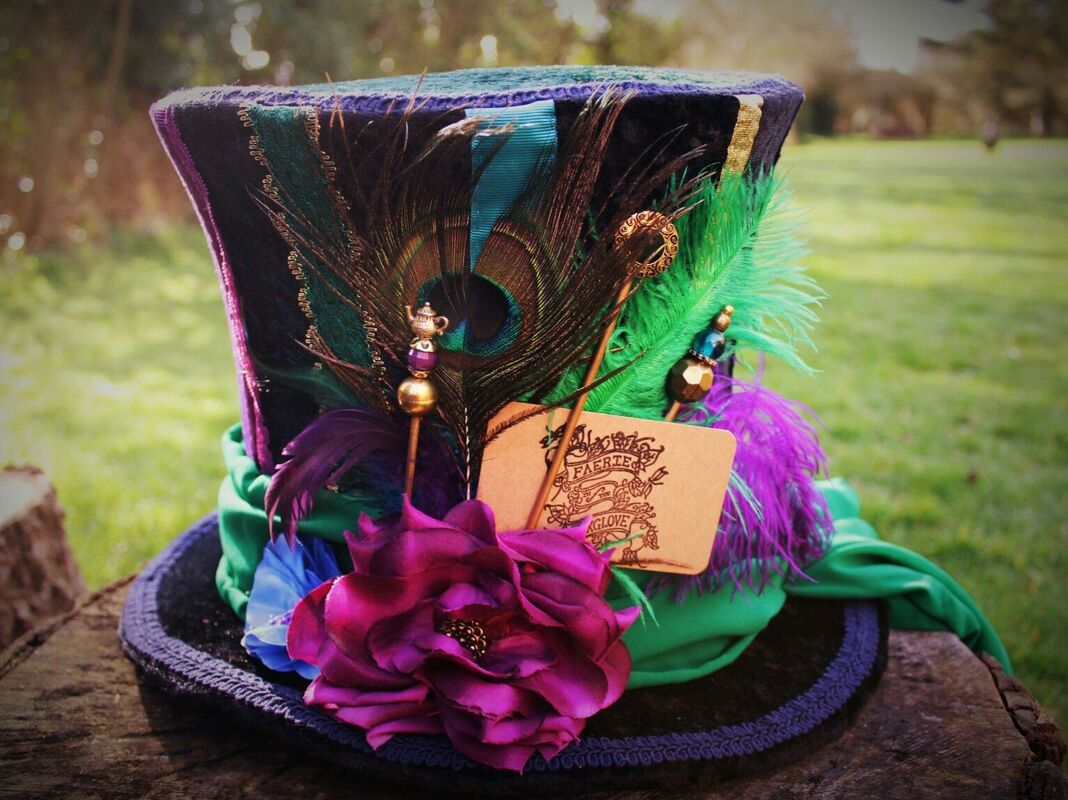

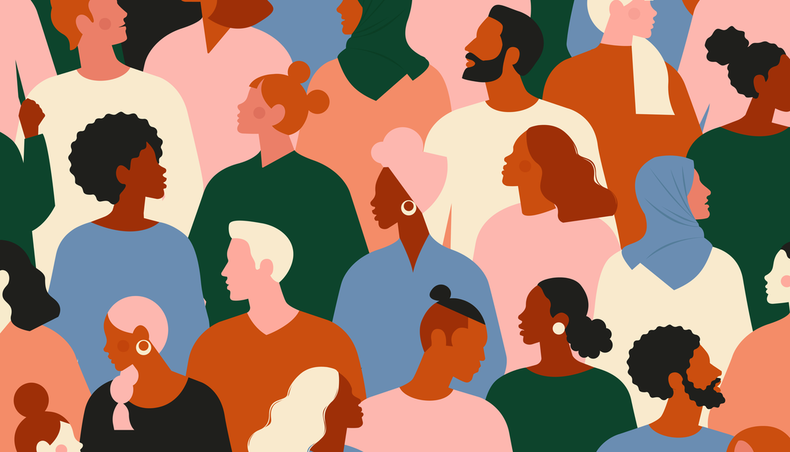
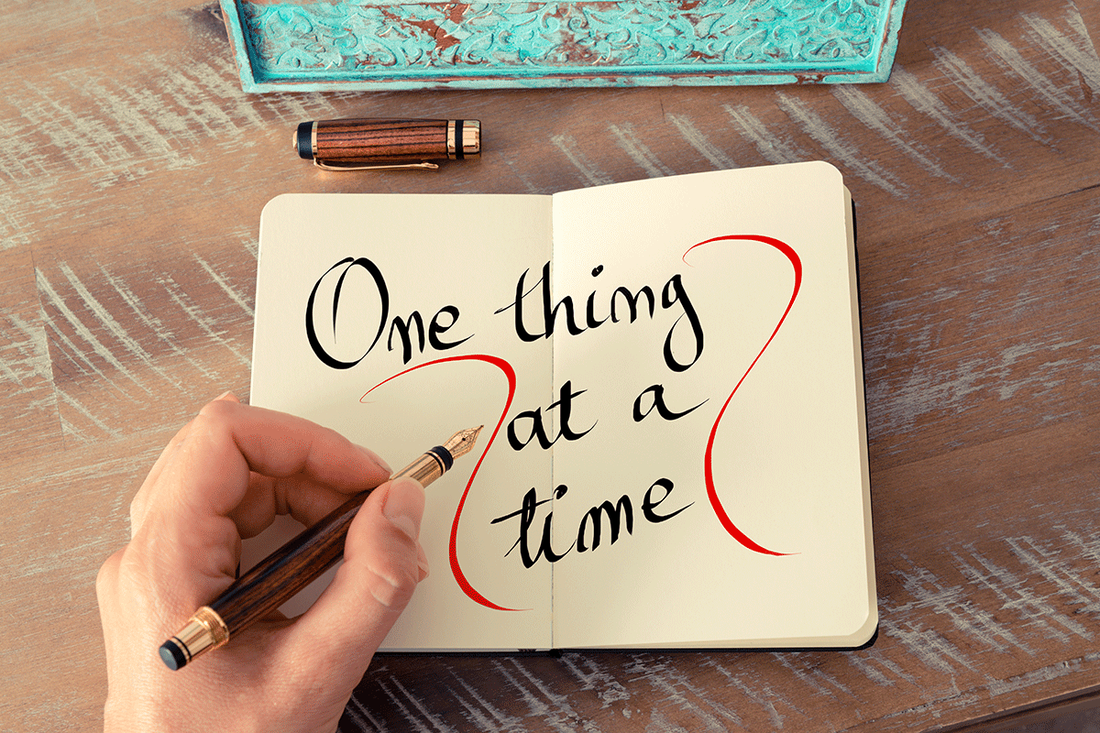
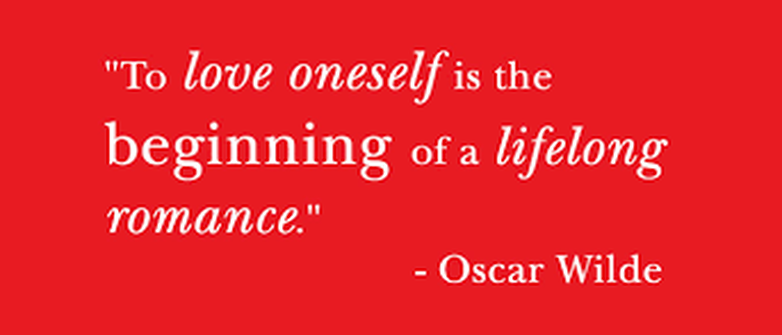


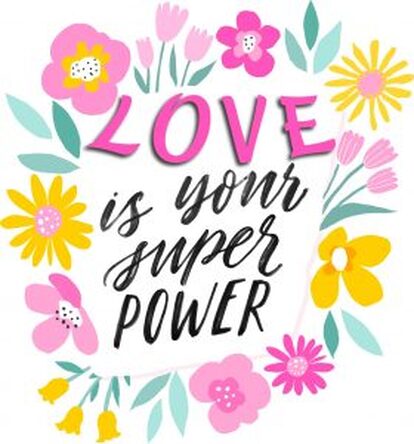
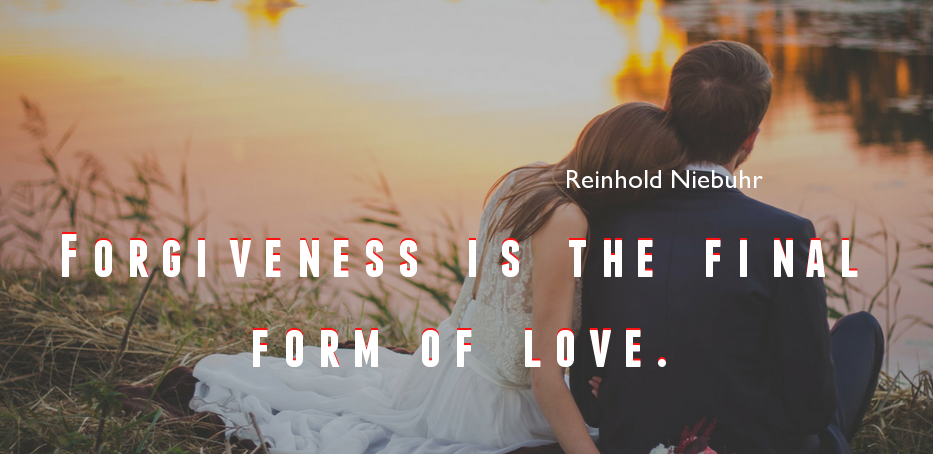
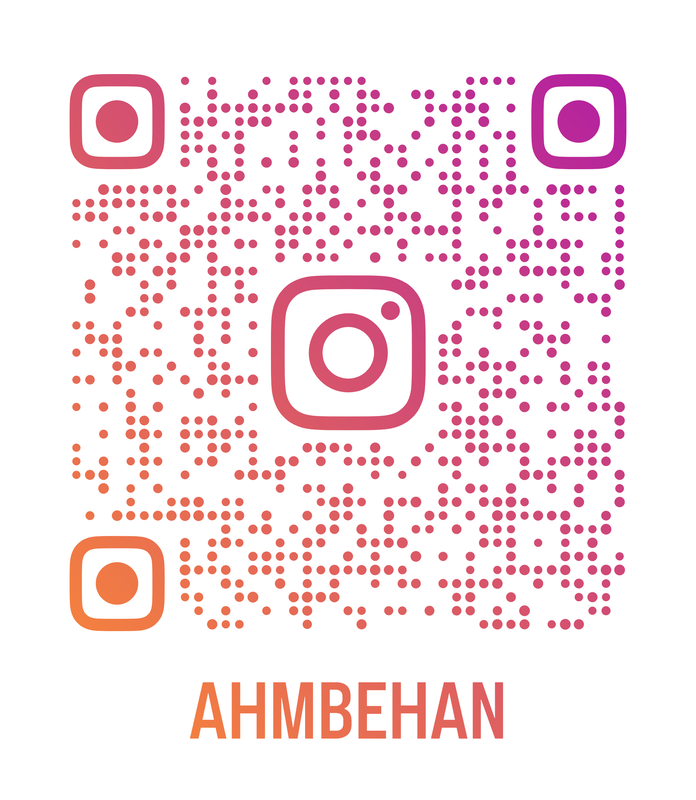
 RSS Feed
RSS Feed